Common reagents for virus are highly susceptible to foam during transport and shaking due to their components, and its influence has been neglected by many people. The beautiful foam has impacts including inconvenience during sampling, possible contamination of the entire virus laboratory, occurrence of “false positive” result, and seriously endangering the safety of operators.
Whereas, YOCON upcoming foam-free virus sampling tube can eliminate the foam. We have optimized the formulation of the reagent for inactivated virus to replace the substances that cause foaming, thus achieving the immediate elimination of foam throughout the process.
The latest foam-free virus sampling tubes will be launched soon to open a new chapter of YOCON sampling tube products. Please stay tuned!
We have conducted the following three tests to verify the effectiveness of the latest foam-free sampling tubes --
Test 1: Evaluation of foam elimination results
1. Objective
To compare the difference in foam elimination results between YOCON foam-free inactivated reagent and a commercially available common brand.
2. Design
1) The in-transport vigorous shaking of sampling tube was simulated, then the tube was kept standing, and observed for the foam elimination of two reagents at the same time.
2) The uncapping of the sampling tube was simulated when there was foam, and the foam overflow was compared.
3. Results
1) Foam states of the two sampling tubes after shaking:
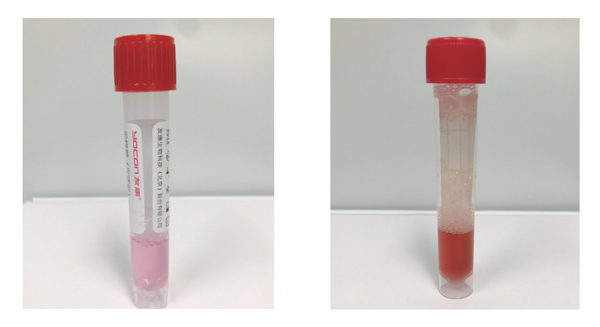
2) Foam states of the two sampling tubes 30 seconds after shaking:
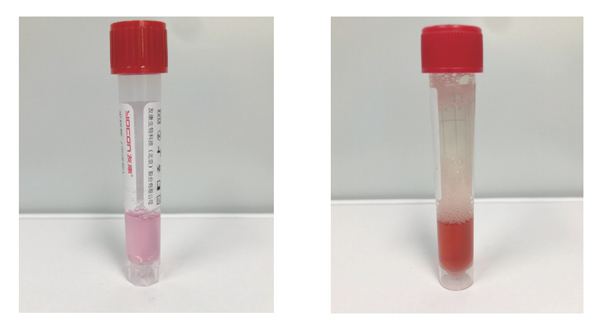
3) Foam states of the two sampling tubes 2 minutes after shaking:
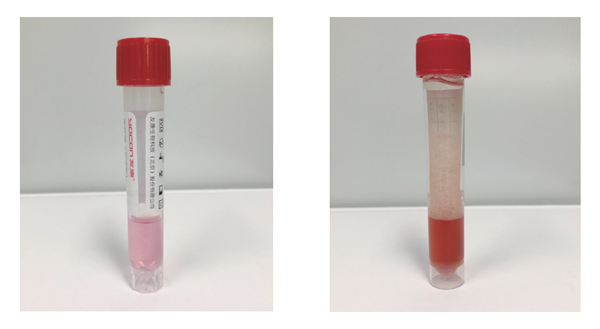
4) Sample overflow caused by capping and uncapping during simulated foam formation:
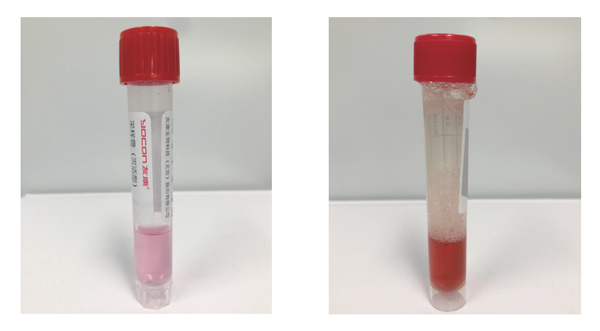
4. Conclusions
(1) YOCON inactivated virus sampling tube generally produced no foam after vigorous shaking, while the commercially available sampling tube of a brand showed obvious foam.
2) YOCON inactivated virus sampling tube had complete foam elimination within 2 minutes.
3) YOCON inactivated virus sampling tube had no foam overflow during uncapping and capping.
Customers may raise the following questions: Although it has been verified through numerous tests, how about its performance? What is the difference in performance between the foam-free virus sampling tube and the previous versions? Does the foam-free formulation affect viral inactivation and viral nucleic acid preservation results?
The following two tests will provide answers for you --
Test 2: Evaluation of viral inactivation results
1. Objective
To demonstrate that viruses treated with a foam-free inactivated reagent are inactivated without infectivity.
2. Design
1. Activity judgment: VERO cells were infected with the treated virus, the infection result was observed and the data statistics was conducted.
2. Control: Non-inactivated reagent treatment group was used as negative control, and foam-containing inactivated reagent treatment group was used as positive control group.
3. Virus: Attenuated porcine epidemic diarrhea virus (PEDV) vaccine, with a virus titer of 1010 copies/mL.
4. Procedures:
(1) The virus stock was mixed with the reagent in a 1:1 volume ratio (1 mL each) and kept standing for 2 minutes at room temperature. Then the reagent was neutralized with 500 times the volume of virus isolation medium.
(2) VERO cells were infected with neutralized virus mixture.
(3) The pre-cultured VERO cells were washed twice with PBS. The prepared virus mixture was inoculated in a six-well plate, 500 μL per well.
(4) The virus mixture was incubated for 2 hours, and shaken outside the incubator every 30 minutes.
(5) The virus mixture was removed at the end of incubation, and 2 mL of virus isolation medium was added to each well.
(6) The cells were incubated in an incubator at 35 °C with 5% CO2. The cell growth and lesions were observed daily thereafter.
3. Results
1. Cells in blank control group grew normally.
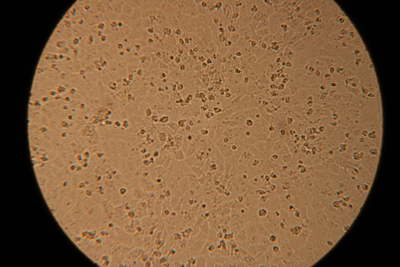
2. For foam-containing inactivated reagent treatment group, cells grew normally.
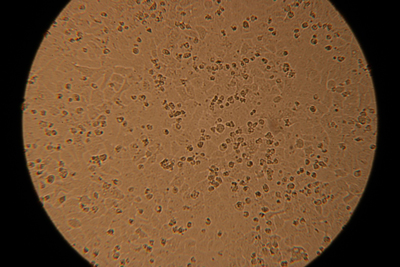
3. For foam-containing inactivated reagent treatment group, cells grew normally.
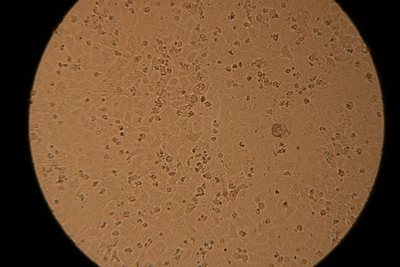
4. For non-inactivated reagent treatment group, cells had significant pathological changes.
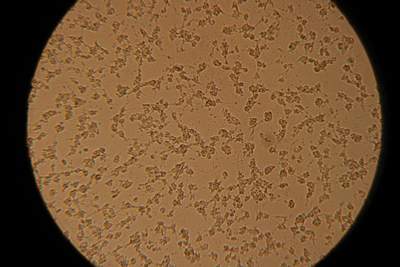
4. Conclusions
YOCON foam-free inactivated reagent showed significant viral inactivation results.
Test 3: Evaluation of inactivated viral nucleic acid preservation results
1. Objective
To verify that there is no significant change in the nucleic acid testing results between YOCON foam-free inactivated virus reagent and original foam-containing inactivated product.
2. Design
100 uL of influenza virus was added to 1 mL of inactivated reagent, mixed well and divided into two portions. The nucleic acid of the virus was extracted from one portion immediately and frozen at -80 °C. The nucleic acid of the virus was extracted from the other portion after storage at room temperature for 48 hours. The PCR assay was carried out for nucleic acids from each group to determine their preservation results.
3. Results
Ct values of test groups
Treatment group | Ct value |
Foam-containing inactivated reagent treatment group-0h | 23.14 |
Foam-free inactivated reagent treatment group-0h | 23.43 |
Foam-containing inactivated reagent treatment group-48h | 23.21 |
Foam-free inactivated reagent treatment group-48h | 23.32 |
4. Conclusions
1) There was no difference in nucleic acid testing results before and after storage for 48 hours at room temperature with virus added in the inactivated reagent.
2) There was no significant difference in nucleic acid testing results between foam-containing inactivated reagent treatment group and foam-free inactivated reagent treatment group.

 Yocon Market
Yocon Market 2021-12-29
2021-12-29 Company Events
Company Events


